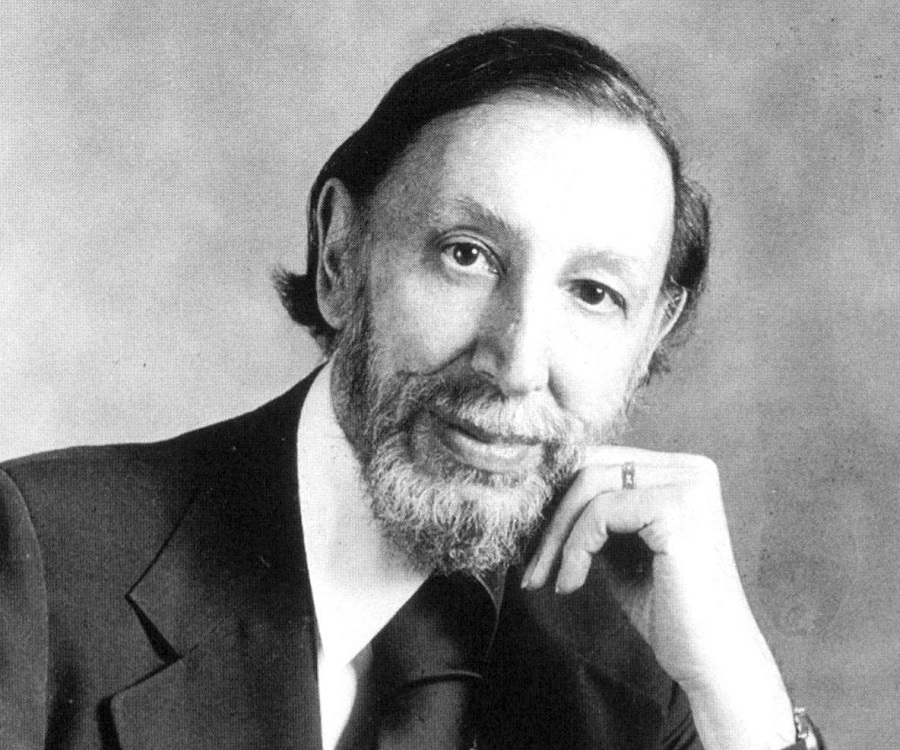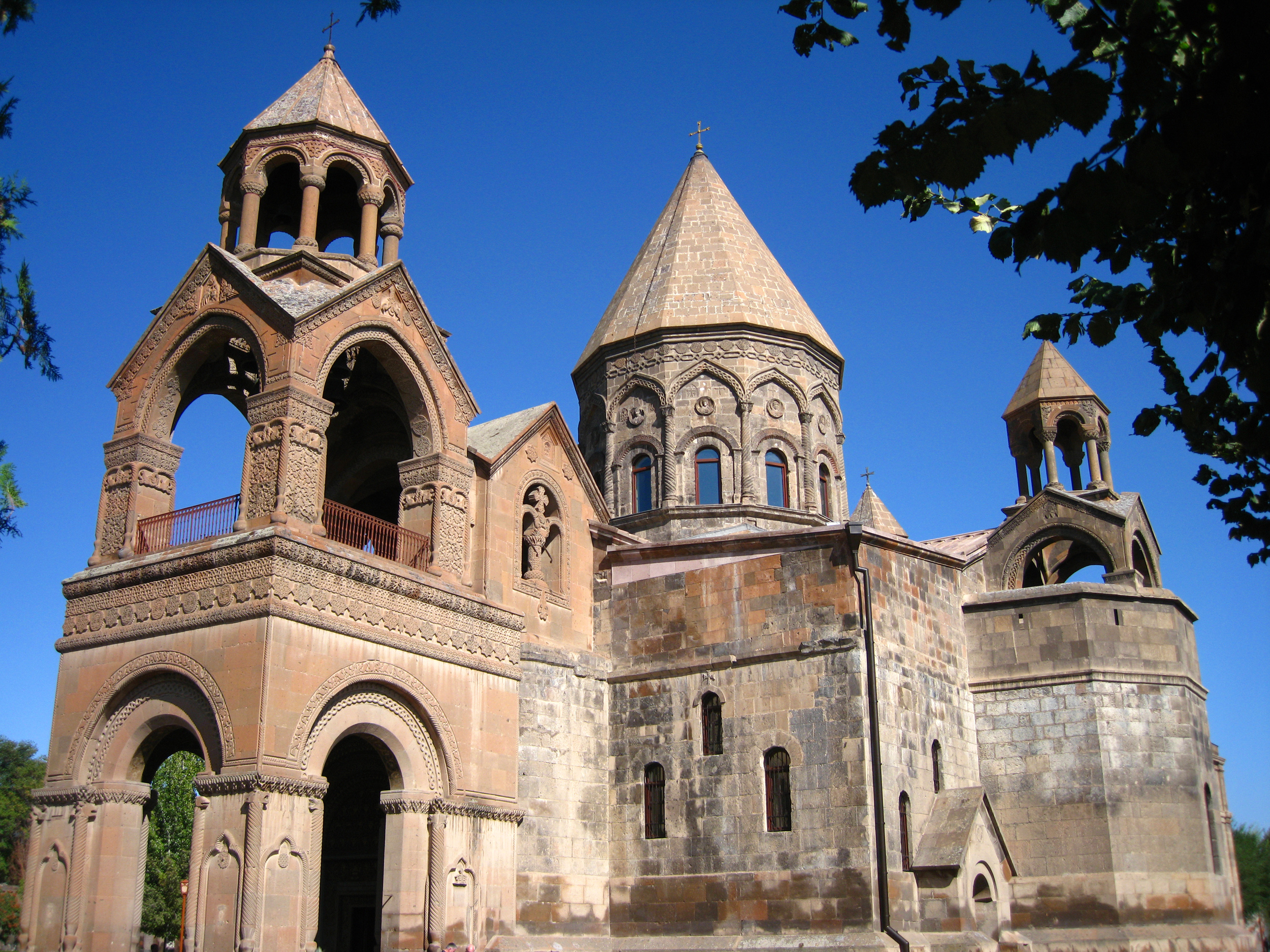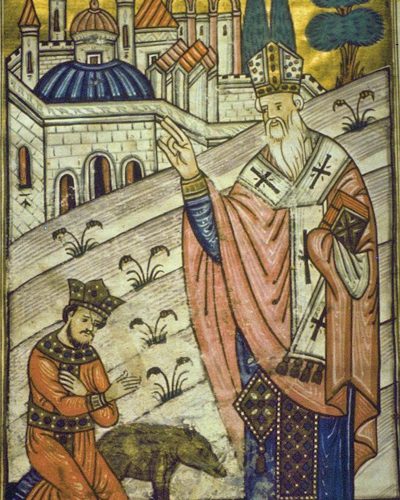I haven’t had a Music Tuesday post in a while. I came across this piece on my local classical music station (WQXR, you can get it on the internet) while driving. I had never heard of it, nor of the composer, Alan Hovhanass.
Alan Hovhanass (1911-2000) was an American composer of partial Arminian ethnicity, and he would eventually embrace that ethnicity and compose from that cultural perspective, at least at first. He would later expand into other world musical perspectives. His music embraces many international forms and styles. I probably should be embarrassed I had never heard of him. He was immensely prolific—67 symphonies!—with over 500 known compositions. And he destroyed over a thousand pages of youthful compositions which he didn’t consider worthy. He wrote his first composition at the age of four!
Prayer of St. Gregory is a trumpet piece with accompanying strings. There is an alternate arrangement with an organ replacing the strings. I’ll embed both and we can decide which we prefer.
The
Prayer of St. Gregory piece is part of Hovhannas’s opera, Etchmiadzin. Etchmiadzin is an alternate name to the
Armenian city of Vagharshapat where the holy Etchmiadzin Cathedral resides. It is not clear to me whether
the opera refers to the city or the cathedral.
The Cathedral dates back to the fourth century. Construction is supposed to have begun back
in 303 AD, and attributed to St. Gregory the Illuminator, the founder of Armenia’s Apostolic Church, which is currently not in communion
with the Catholic Church. As an aside, I should add that there is
currently an Armenian Catholic Church which is in full communion with the Bishop of Rome and is one of the 23 Eastern
Rite Catholic Churches.
The
Armenian Apostolic Church was in 301 the first official Christian religion of a
national state in history. The Catholic
Church was still being persecuted under pagan Imperial Rome and would not reach
toleration under the Emperor Constantine until 313 but not made the state
religion of the empire until 380 by the Emperor Theodosius I. Armenia had last been part of the Roman
Empire in 117 under the Emperor Trajan but Trajan’s successor, Hadrian, decided
to not defend it in 118. Parts of
Armenia in subsequent years would both be incorporated and then fall away from
both the Roman and Parthian Empires which were in struggle against each other. But Christianity took root in Armenia in as
early as the year 40, supposedly under the apostles Jude and Bartolomew.
Gregory
the Illuminator, however, is credited with evangelizing the country in the late
third and early fourth centuries. Prior
to the conversion of the country, Gregory is to have spent fourteen years in
jail for
refusing to sacrifice to a pagan goddess, a jail cell which sounds like it was
not much different than a well. He would
eventually be released and then convert the king, and the country
followed. I am guessing that the Prayer
of St. Gregory is alluding to the prayer Gregory must have made while in the
desolation of the jail pit. The trumpet solo
voice represents the prayer of desolation, sadness, and appeal of the saint toward
providence. The strings (or alternative
organ) establishes the context and ambiance of Gregory’s predicament and
perhaps represents the voice of God. On
that you will have to judge for yourself.
Let’s listen first, and then I’ll try to describe what my amateur ears
hear. Of the various orchestra versions
on the internet, I prefer this orchestra version with David Krauss on trumpet
and the Metropolitan Opera Orchestra (The Met) accompanying.
There are three trumpet entries into the piece. I think that is the key characteristic in conceptualizing the score’s structure. The strings—the first voice—initiates the piece and sets the context of what feels like prison walls. At about thirty seconds the trumpet makes its first entry and plays what I’ll call the desolation melody. The phrasing seems to emulate a vocal prayer. The first trumpet entry lasts for about 40 seconds. That diminishing phrase that concludes the trumpet melody seems to be the defining fragment of the melody and expresses the emotional core.
Then the strings have a short moment of prominence picking up what I think is part of the desolation melody. In just 20 seconds, the trumpet enters for the second time, again with the desolation melody but this time the prayer developing to a greater appeal. It reaches a higher pitch of notes with more dynamism and longer note duration. The energy momentarily surges but then retreats to the melancholy phrasing of the first entry.
Then the trumpet goes silent for almost two full minutes, almost 40% of the piece. In this stretch, the strings develop its melody, what seems to me a response to the desolation melody. This second melody seems to pick elements of the trumpet phrasing but its ebbing and flowing feels like this is a voice of comfort, or trying to comfort, perhaps even a voice of explanation. Is the trumpet comforted? I feel a tension in the extended silence, and when it comes in for its third entry the melody has not changed and its appeal seems even greater. It returns to the dynamism of the second entry only with even higher pitched notes. But after its burst of energy the trumpet returns to its desolation phrasing, but, it should be noted, the piece concludes with the strings and trumpet ending on an extended harmonic note together. While desolation melody has remained prominent, the piece does seem to conclude in intimacy.
But these are all my reactions. You could make the argument that it ends in an unanswered appeal. That is for you to decide.
Now
let’s hear the version with organ as accompanying voice. Wynton Marsalis is on trumpet and Anthony
Newman on organ. This alternate version
is a shade shorter, the forty seconds taken from the trumpet’s silent section.
Marsalis
is magnificent on trumpet but I have to admit, the organ seems to be lacking in
the response. It’s just not a fuller
voice than the strings, and it doesn’t feel equal to the trumpet voice. I definitely prefer the version with the
strings. How about you?





Wow what a moving piece! I hear what I think of as a kind of classic Hohvaness harmonies, which even though bordering on a more modern sound, are lush and melodic. Even in his more contemporary pieces this sound is retained. I'm sharing this opinion from a limited knowledge.
ReplyDeleteI have to agree Manny, that the orchestra version conveys a lot more depth. If this was originally written for orchestra and then transcribed for organ, it makes sense. There is only so much that can be conveyed on an organ, unless a piece is written specifically for organ. I also preferred the trumpeter, as I think he was more subdued and perhaps trying less to be virtuosic, though I appreciate Wynton Marsalis quite a lot.
My analysis is less detailed than yours, but I definitely pick up on the feel of solitary wandering. You can almost hear that he is in a wilderness , and the solo trumpet is plaintive, conveying his prayer. Maybe the silent period had something to do with the prison or well.
Thank you for commenting Kelly. Obviously you have heard of Hovhanass. This is my first encounter. I liked both trumpeters, though I see what you mean. My suspicion is that this is more Krauss's type of music than Marsalis's but I think both played it very well.
Delete